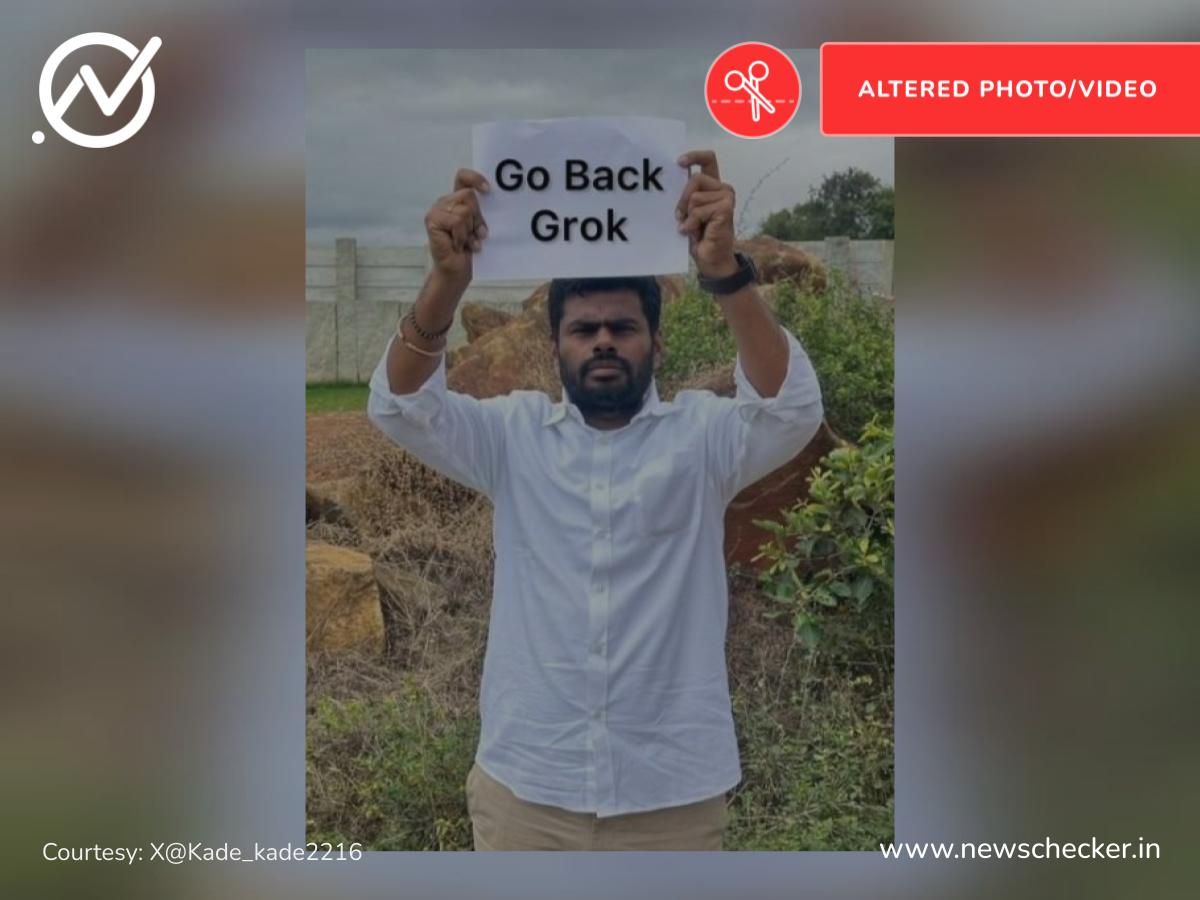Edited Image Purportedly Depicting Annamalai with ‘Go Back Grok’ Sign

Examination of the Viral Image Featuring Tamil BJP Chief Annamalai
Background of the Image
Recently, a photo circulating online claims to show K. Annamalai, the Tamil Nadu BJP Chief, holding a placard that reads "Go Back Grok." This image has gained significant attention amid ongoing debates and controversies involving the Indian government and the application of the Information Technology Act.
Origin of the Controversy
The viral image features Annamalai during a protest or event where he is supposed to express his political stance. However, a closer inspection reveals inconsistencies that suggest the photo has been digitally altered. The original context and text conveyed in the image are crucial to understand the ongoing discussions about the protest and Annamalai’s political activities.
The Check on Social Media
A simple Google search using Google Lens led to a post made by Annamalai on his official X account dated December 26, 2024. This post showcases a similar image but reveals that Annamalai was actually holding a placard that says "#ShameOnYouStalin," rather than the text claimed in the viral photo.
Comparison of Images
- Viral Image: Annamalai appears with the altered text "Go Back Grok."
- Original Image: The placard features the text "#ShameOnYouStalin," which is clearly visible in Annamalai’s own post.
The viral image clearly shows that the original hashtag has been erased and replaced, suggesting a case of digital manipulation. Two images provide stark contrast, revealing the tampering done to serve a different narrative.
Social Media Context and It’s Implications
The manipulated image aligns with discussions around the actions of the Indian government regarding content moderation on digital platforms. Annamalai’s political position, particularly as it relates to public protests and expressions against government actions, plays a critical role in understanding the significance of this photo. Such situations underscore the importance of verifying information shared on social media, especially when it pertains to political figures and sensitive topics.
Additional Information Sources
Further examination into the situation reveals that the altered image gained traction not only on platforms like X but also on Instagram. The original post can still be found on Annamalai’s official Instagram account, further solidifying the argument against the credibility of the viral image.
A report from The New Indian Express, dated December 26, 2024, discussed Annamalai’s protests against police actions concerning the mishandling of a sensitive case involving a university student. This adds context to Annamalai’s political motivations during that time.
Impacts of Misinformation
The propagation of edited images can lead to misinformation and misrepresentation of political figures. Such instances highlight the immense responsibility both users and platforms have in sharing authentic content. It becomes vital for the audience to discern between authentic and altered representations, particularly in the politically charged atmosphere.
Coping with Digital Manipulation
To tackle misinformation:
- Verify Sources: Always check for the original source of an image or claim.
- Use Fact-Checking Tools: Leverage platforms that specialize in debunking misinformation.
- Cross-Check Context: Investigate whether the context presented aligns with known facts surrounding the personalities involved.
This way, social media users can contribute to a more informed public discourse, reducing the risk of manipulated narratives influencing political contexts.





